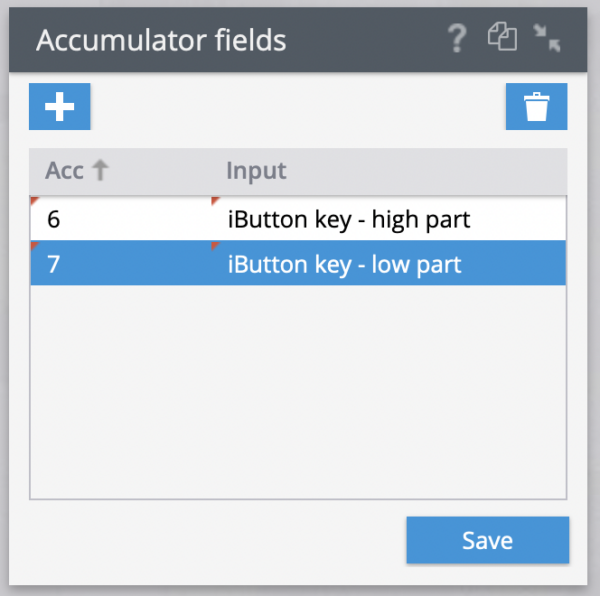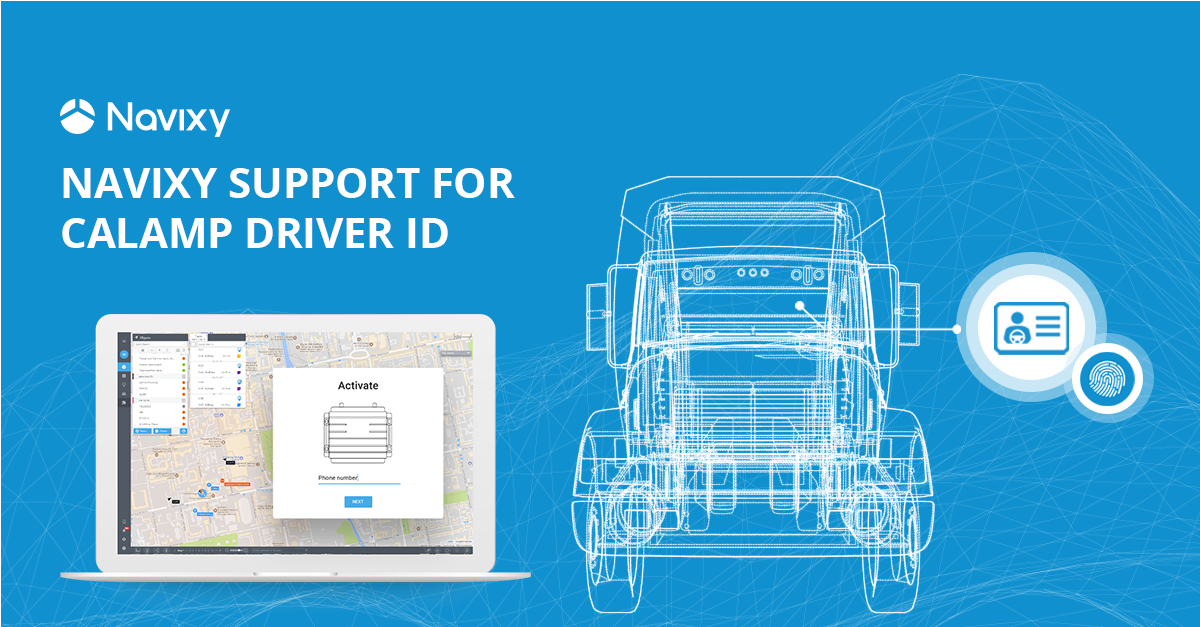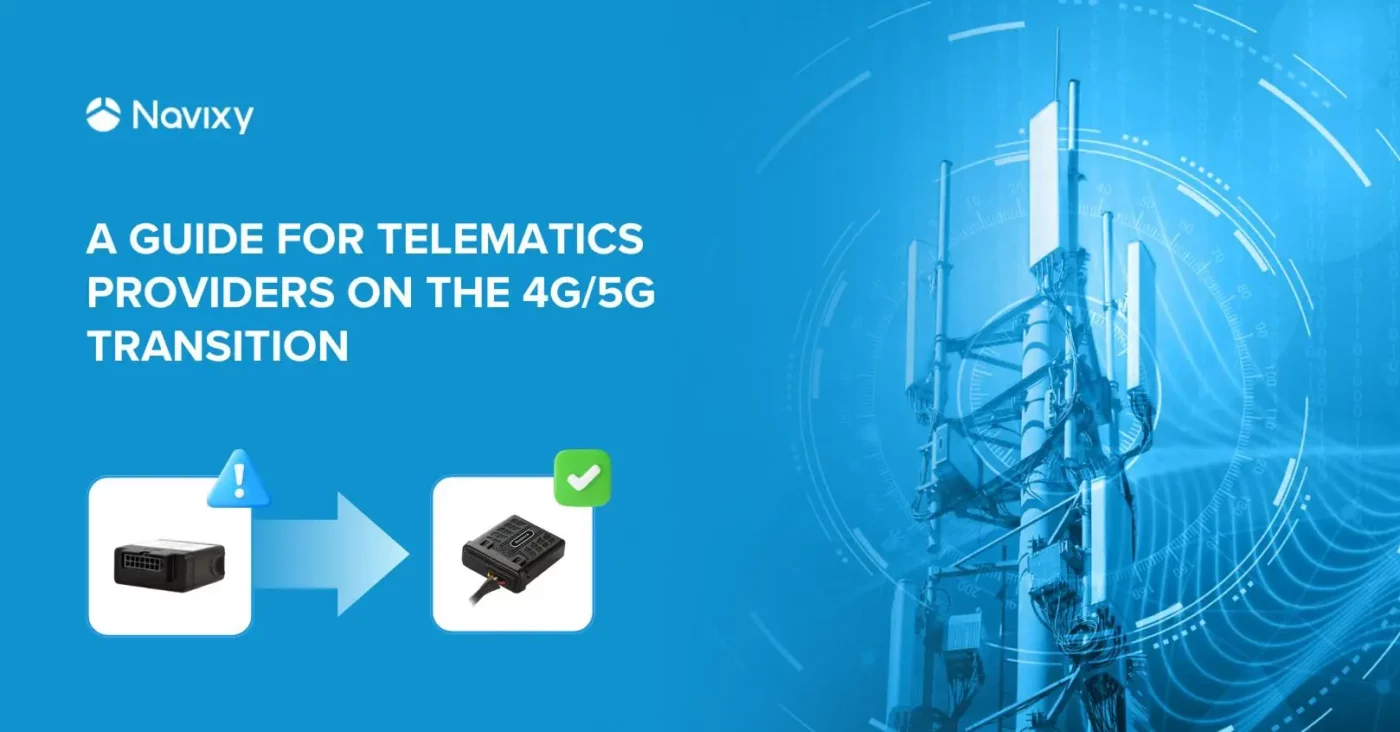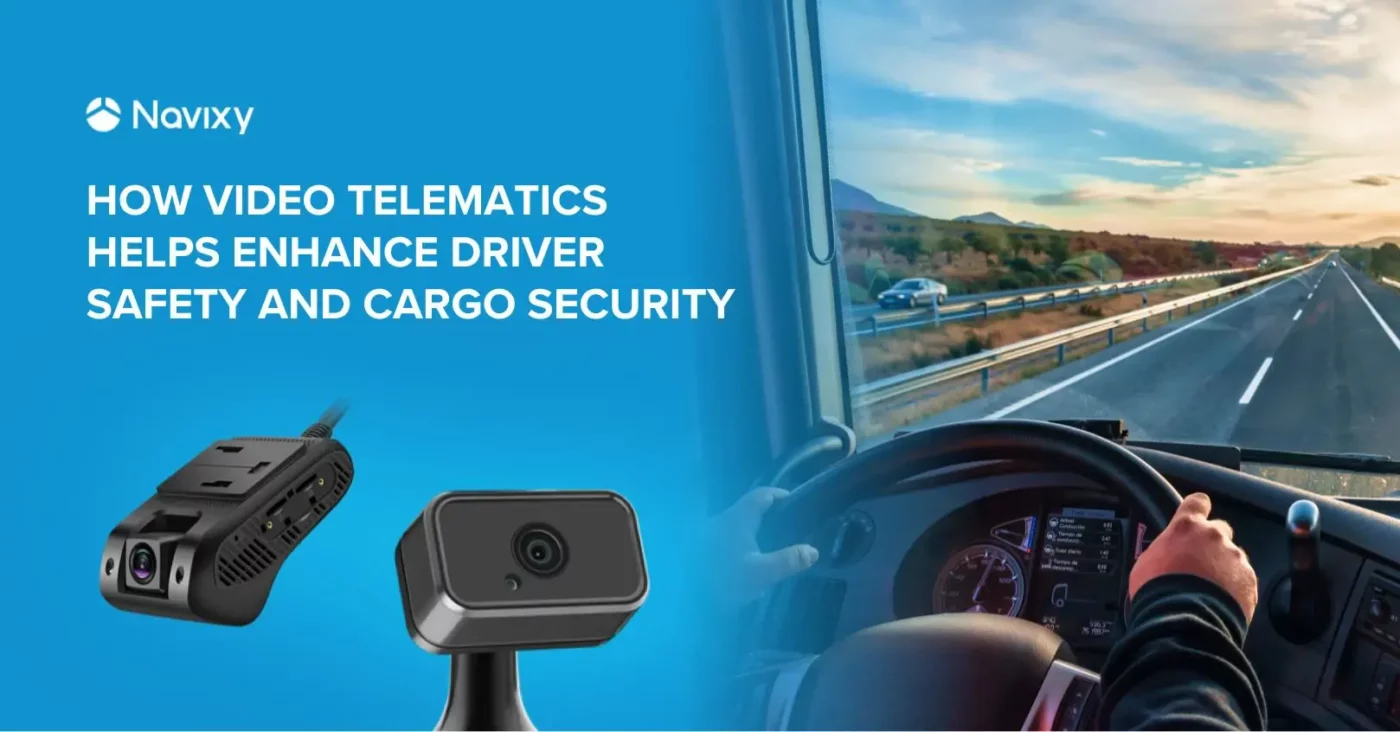Given that manually assigning drivers to vehicles can be time-consuming and lead to mistakes, it helps to use an automatic solution like CalAmp driver ID. With the help of these devices, managers can optimize business operations to save time, more accurately track and log working hours, prevent theft, and monitor driving behavior for a safer and more efficient fleet.
To hear more about the CalAmp devices that are supported, how to set them up, and what their benefits are, contact us at Navixy today.
How does driver ID work?
First, let’s discuss how driver identification works and why it’s important for businesses to know which employee is behind the wheel of a given vehicle. If you like to learn even more, be sure to check out our blog post “Fingerprint and other options for Driver Identification on Navixy.”
When an employee enters a vehicle with CalAmp driver ID, they’ll simply need to swipe their unique Driver Key against the corresponding button on the dashboard to sign in. This should be done about 30 seconds before engaging the ignition. Since each driver has an assigned profile, the system will know who is at the wheel and can report it to the fleet management platform. Moreover, the button is wired to a GPS tracking device that offers a number of functions.
In addition to automatically tracking who is driving each vehicle currently dispatched, driver ID also allows for people to switch vehicles without creating confusion. When the manager runs a report on the driver’s profile, they’ll be able to see every truck, van, or car they’ve driven during a given period of time, as well as relevant safety and performance reports.
The list below includes every CalAmp device that now supports driver identification in Navixy.
- CalAmp TTU-2830
- CalAmp LMU-5530
- CalAmp LMU-4520
- CalAmp LMU-4230
- CalAmp LMU-4200
- CalAmp LMU-4100
- CalAmp LMU-3640
- CalAmp LMU-2700
- CalAmp LMU-2640
- CalAmp LMU-2630 (inverted inputs)
- CalAmp LMU-2630
- CalAmp LMU-2600
- CalAmp LMU-1100
What are the benefits of driver ID?
There are a number of benefits to identifying drivers with GPS tracking technology, including improved efficiency, oversight, and monitoring.
In the past, fleet managers had to rely on manual reporting to know which vehicle was being driven by which employee. This method is not only slow, but also subject to human error and dishonest recordkeeping. By making the process automatic, businesses can spend less time tracking down employees and more time on addressing inefficiencies. Fortunately, CalAmp devices facilitate the accurate tracking of working hours, rest periods, and overtime.
Another key benefit of driver ID is that it helps improve safety. Since unsafe drivers and practices can cost fleets significant sums, it pays to take preventative measures that encourage compliance on behalf of drivers. With CalAmp driver ID, it’s possible to know if someone is using a vehicle without authorization. Furthermore, if an asset goes missing, isn’t delivered, or isn’t collected, the manager can check to see who was driving.
Along with helping to keep drivers honest, driver ID also works with Navixy’s eco-driving module to improve driver performance and safety. If the system detects any harsh driving events, such as sudden braking or speeding, it can tell the fleet manager who’s currently at the wheel. This in turn opens up training opportunities to ensure that employees understand the rules of the road and management’s expectations for proper conduct during deliveries.
By eliminating much of the effort required by manual reporting, CalAmp driver ID devices can help companies and administrators save valuable time. Moreover, this technology can help keep your team safer and more productive.
Setup in Navixy
Next, we’ll cover how to install and set up CalAmp devices for driver identification. Although CalAmp devices have variable fields that are defined by the user, Navixy’s smart, “out-of-the-box” solution makes it easy for the GPS tracking system to know where to find the right information. Thanks to this functionality, it’s possible to set up a device without requiring complicated coding logic.
First, connect the iButton to the 1-Wire. Then, use the CalAmp LMU toolbox to configure the CalAmp accumulator to transmit driver ID values. Though this function uses two accumulators, the value is determined by a single number. For instance, below is an example of using 6 and 7:

To clarify, 103 is equal to 0 x 67 in a hexadecimal system, in which 6 and 7 refer to their respective accumulators. After, it’s necessary to enter the Navixy platform to specify these variables in the CalAmp portal.

For more detailed information regarding CalAmp driver ID installation, refer to our setup and troubleshooting guides.
Navixy looks forward to discussing your needs further, so feel free to call us for additional details. In the meantime, you can start a free trial of our platform to experience our many capabilities for yourself.



